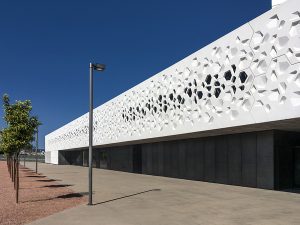Part 3: Contemporary Literature
Part 3: Contemporary Literature (1955-present)

After World War II ended, the international community spent many years rebuilding and coping with the aftermath of the destruction of cities, towns, roads, national economies, and social structures. One response to the upheaval caused by the War was for ethnic communities or colonized nations to seek political or cultural autonomy, as discussed in the chapter on Postcolonialism. In addition, the mid- to late-twentieth century period encompassed significant cultural and political developments worldwide:
- The formation of the Soviet bloc nations and the partitioning of Germany set the stage for the political tensions that would culminate in the Cold War between the United States and Soviet Russia that lasted from the 1950s through the 1980s and established a constant threat of nuclear war;
- The creation of the state of Israel in 1948 led to a continuing series of Arab-Israeli conflicts;
- The partitioning of Korea and Viet Nam led to civil wars in those nations that came to involve the United States and European nations in the effort to stop the spread of Communism;
- China, under Mao Tse Tung, and then continuing under the control of the Communist party, began to emerge as a world power;
- Japan recovered from the devastating effects of the nuclear bombs dropped on Hiroshima and Nagasaki and became an important trade partner for U.S. and European countries;
- The social and political upheaval of the 1960s and 1970s resulted in the emergence of the recreational drug culture, the Civil Rights movement in the United States, the international Feminist movement, and the rise of the revolutionary political left.
In response to these galvanic changes, literature of the mid- to late-twentieth century is sometimes characterized by critics as “postmodern,” a term that loosely reflects a shifting set of themes and strategies. Unlike Modernists, who tended to welcome classification and identification with a defined movement, postmodernists resist manifestos, instead considering themselves more as subversive individualists. However, it is possible to suggest some broad tendencies that characterize literature of the mid-twentieth century to the early twenty-first century. Also, note that some of the writers in this section represent an intersection between postmodernism and postcolonialism; these writers could be placed in either section here.
First, these poets, playwrights, and fiction writers, while resisting identification as modernists, share the same impulse to experiment with subjectivity and the inner life. Thus, fiction during this period continues to be marked by the investigation of interiority through the use of internal monologues, free indirect discourse, and stream of consciousness techniques. Salman Rushdie’s chapter “The Perforated Sheet,” from his novel Midnight’s Children, is written in first person, conveying the inner life and experiences of its narrator. Naguid Mahfouz’s Midaq Alley, employing free indirect discourse, slips in and out of the consciousnesses of its large cast of characters.
As a response to the Cold War, another characteristic of the literature of the period is a tendency to present dystopian themes. From the late-1950s through the mid-1980s, the world often seemed poised on the brink of nuclear war, and the themes of works of the period reflect these anxieties. Some examples of this characteristic include Thomas Pynchon’s The Crying of Lot 49 (1965), Kurt Vonnegut’s Cat’s Cradle (1963), and many dystopian science fiction novels, including Pat Frank’s Alas, Babylon (1959) and Russell Hoban’s Riddley Walker (1999).
Nonlinear narrative structures are also widely associated with postmodern texts. These texts use fragmented organizational patterns, flashbacks, or even alternate histories to disrupt and subvert the reader’s expectations and assumptions. Probably the most well-known use of nonlinear narrative is Kurt Vonnegut’s Slaughterhouse Five, in which Billy Pilgrim becomes “unstuck in time.” The use of alternate history or anachronisms have been effectively employed recently by Margaret Atwood in The Handmaid’s Tale (1985), Kazuo Ishiguro in Never Let Me Go (2005), and Colson Whitehead in The Underground Railroad (2015).
Magical realism, the juxtaposition of a generally realistic plot with interventions of the supernatural, fantastic, folkloric, or mythical, is another technique that has emerged during this period, most often associated with the works of Juan Luis Borges and Gabriel Garcia Marquez. In this section, both Leslie Marmon Silko and Salman Rushdie employ magical realism in their selections.
With increasingly urgent discussions of issues surrounding national or ethnic identity, gender bias, and sexuality, writers, poets and playwrights have begun to explore themes of personal identity. These themes are reflected in the works of Seamus Heaney, Francisco X. Alarcon, Yehuda Amichai, Mahmoud Darwish, and Yasmine Reza included here.
Written by Anita Turlington

